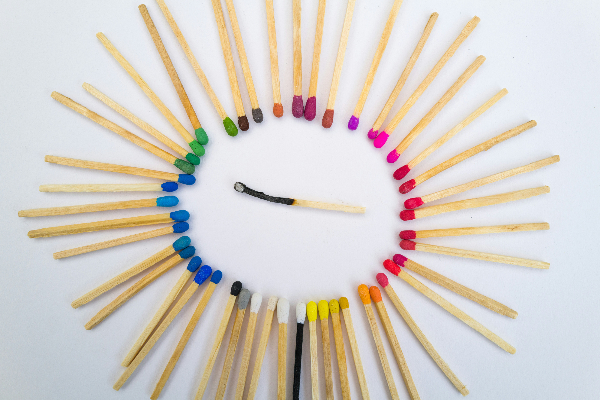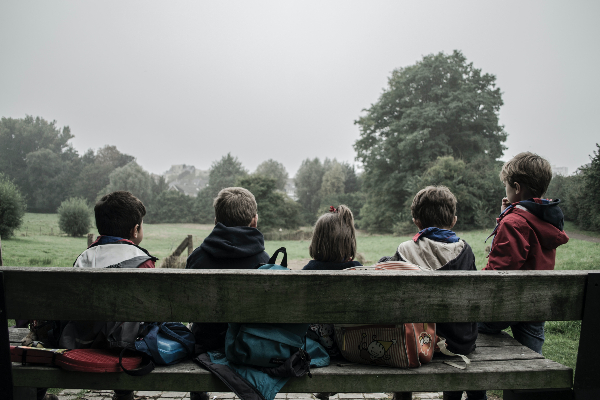Reflecting to Learn

There are books that I keep going back to reading, because they inspire me, engage me in deeper thinking or provide practical ways to do my work better. I hope that Teaching with the HEART in Mind is one of these books for you!
I recently reread The 5 Dimensions of Engaged Teaching, a book that offers a practical approach to teaching and learning focused on meaning, purpose and motivation in the classroom.
One of the practices in the model is engaging the self-observer, which the authors define as “cultivating the ability to notice, observe, and then reflect on our thoughts, beliefs, biases, emotions, and actions to make more conscious choices.”
This principle asks students and teachers alike to acknowledge their feelings, thoughts, and actions in order to make better, more conscious decisions, instead of functioning on autopilot. In the classroom, it might translate into creating time and space for reflection and self-analysis.
This reflective practice, if build as part of a daily routine, will develop students’ self-awareness and self-management, but also help them make sense of their learning.
Dewey (1962) claimed that we don’t learn from experience, we learn from reflecting on experience.
Reflecting helps us to clarify what was learned and, hopefully, it will inspire new thoughts and actions.
Engaging in reflective practices becomes even more necessary now as educators and students are challenged by the ongoing struggles of this global pandemic, and the need to navigate their behaviors and choices in safe and supportive ways.
If we want our students to develop their critical thinking skills, they will need to practice:
- being active observers,
- asking pertinent questions,
- evaluating arguments,
- being open to examine their beliefs and assumptions,
- and being open to change their minds.
Most of these skills require being able to stop and observe, study and think, and also wonder. As educators, we can build time and space for students to consider their thoughts and feelings, what they have learned and how that is meaningful in their lives.
This is also true for educators! Educators are also learners when they teach and should continuously engage in reflective activities. When students and educators engage in these reflective practices, they can make more conscious decisions and be ready to develop new learning.
Reflective activities will vary depending on your students’ age, your desired outcome or the amount of time you have available. These are a few examples that can be easily incorporated in the classroom:
- Journaling. Students (and educators) may record activities, thoughts, feelings and questions in an individual or group journal. Depending on the desired outcome, you could ask students to reflect on the day, what they wish to accomplish or what they have learned. This could also be a time for free writing. Journaling works really well to help students focus after recess or lunch, but it can also be used at the end of the day or following an activity.
- Group discussion. Listening and speaking are also ways to reflect, and they enhance students HEART skills. You can facilitate discussions focused on the content and skills that students are learning in your class, address classroom concerns or build a sense of community. These shared spaces can assist learners to make sense of their learning and the learning of others.
- Portfolios. Essentially portfolios are a collection of pieces from a learning experience. They help students make connections among interests and skills, and how they relate to what they are learning in school. Portfolios bring a great opportunity for students to reflect on their strengths, and how they could use them to accomplish their goals. Digital portfolios, such as slide shows or multimedia presentations, provide a forum for students to both construct the fruits of knowledge while simultaneously reflecting on it.
- Art. Some students might prefer to express their feelings or thoughts visually rather than verbally or in writing. Offer students the chance to draw or paint as a way to help them reflect on themselves and their learning.
These opportunities for reflection should occur, when possible, before, during and after key activities or events in the classroom. We want students to develop self-awareness and self-management skills by encouraging reflection of their starting point and their progress, and by allowing students to evaluate their own learning. Incorporating reflective activities like the ones described here into your teaching practices will develop students’ HEART skills and help them consolidate what they know so new learning can take place.
An earlier version of this post was originally published in SEL and the Common Core, which is now HEART in Mind.
Subscribe to the HEART in Mind Newsletter
Research-Based Strategies for your SEL Toolbox









